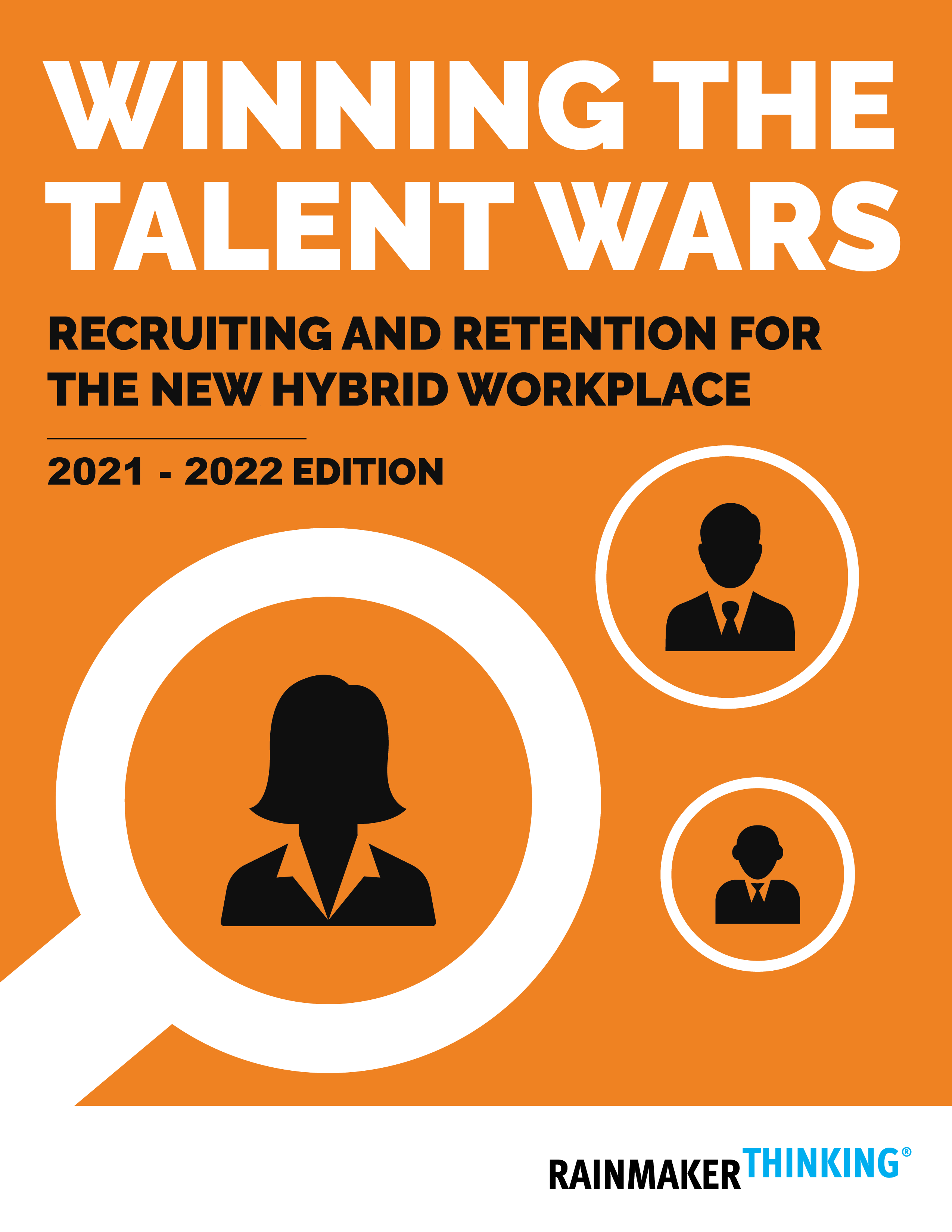You can't afford to ignore today's talent wars
The talent wars of 2021-2022 will be defined by talent shortages and high rates of voluntary turnover, reflecting a confluence of factors exacerbated by the Covid-19 pandemic.
Employers must be wary of the impending wave of employee turnover they will soon face. Chronic understaffing is already a problem many organizations are facing. When open-position and time-to-fill rates are high, teams remain perpetually understaffed.
There are five costs:
- Sales realization opportunities are lost, and over-promised purchasers are ultimately disappointed, due to unfulfilled orders for services and products.
- Current staff members become overcommitted as they seek to complete additional work for positions which remain unfilled. Overcommitment syndrome leads to mistakes, delays, relationship friction, diminished morale, and burnout. Combined, these factors ultimately contribute to increased turnover.
- Overtime costs increase.
- Perpetual understaffing workarounds become entrenched in bad habits leading the team further and further away from best practices.
- New hires do not get enough attention in the on-boarding and up-to-speed training processes.
Not all turnover is bad
Remember: not all turnover is bad. With some employees, you should worry they might stay! Those are the stubborn low performers who do not want to do more, better, faster, or display a better attitude at work.
There are four reasons to push out stubborn low performers.
First, low performers get paid, so they are a waste of money. They consume valuable funds that could be used to differentially reward high performers, instead.
Second, low performers cause problems that high performers must fix. The pace of work is ultimately slowed down and the team's collective potential is stifled.
Third, they send a message to others on the team that low performance might be an option. Mediocrity abounds when there is no one setting the bar higher.
The fourth reason is the one to which you should pay the most attention in terms of competition for talent. The data is overwhelming that high performers--and people who are seeking to be high performers--hate working with low performers. Often, they become very frustrated when managers tolerate low performers. The message it sends is demoralizing to those who are trying to be high performers and do their best work.
Building and supporting a culture, processes, and competencies to identify and remove stubborn low performers is the first key to regaining control over turnover. Even if you personally don't have the authority or influence to help make that happen in your entire organization, you need to make that happen within your span of control. Make your team one that does not tolerate stubborn low performers. Upon that foundation, you can be confident that anybody who is good enough to be on your team should be treated as a retention priority.
The costs of voluntary turnover
When good employees leave, there are five primary costs.
- Replacement costs. When you lose an employee, you will incur the costs of recruiting, on-boarding, and up-to-speed training for a replacement.
- Lost ROI on talent development. You will lose (often to your competitor) the recruiting, on-boarding, and up-to-speed training investment you have made in the departing employee.
- Disruption in workflow and relationships. There is usually an increased work burden on remaining employees. When a good employee leaves suddenly or not on good terms, the disruptions are greater.
- Diminished morale and copycat departures. When good employees leave, sometimes this triggeres other unplanned departures. The instability caused by turnover also decreases team morale.
- Loss of bench strength. The greater your turnover among good employees, the less robust your bench strength of home-grown talent for other positions throughout the organization.
Gain a strategic hiring advantage in 2021
Read more from our new white paper, Winning the Talent Wars: Recruiting and Retention for the Hybrid Workplace.
The post You can't afford to ignore today's talent wars appeared first on RainmakerThinking.










